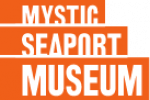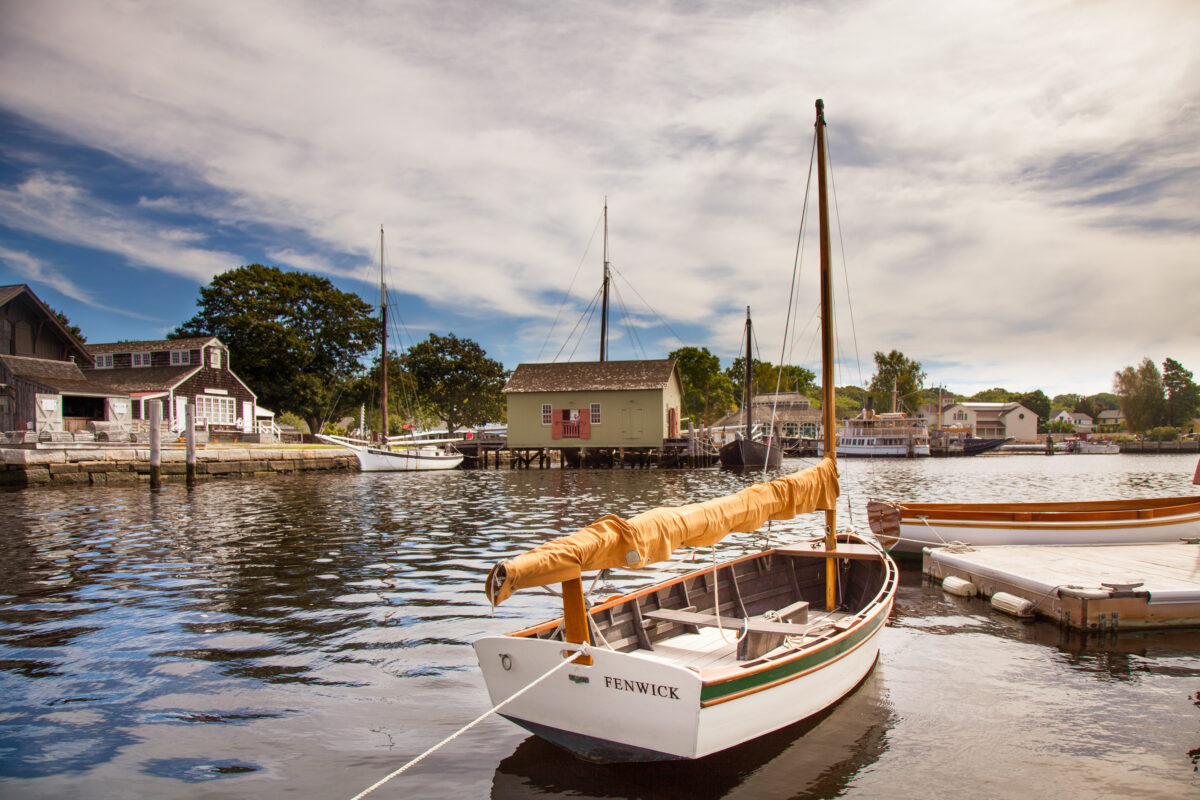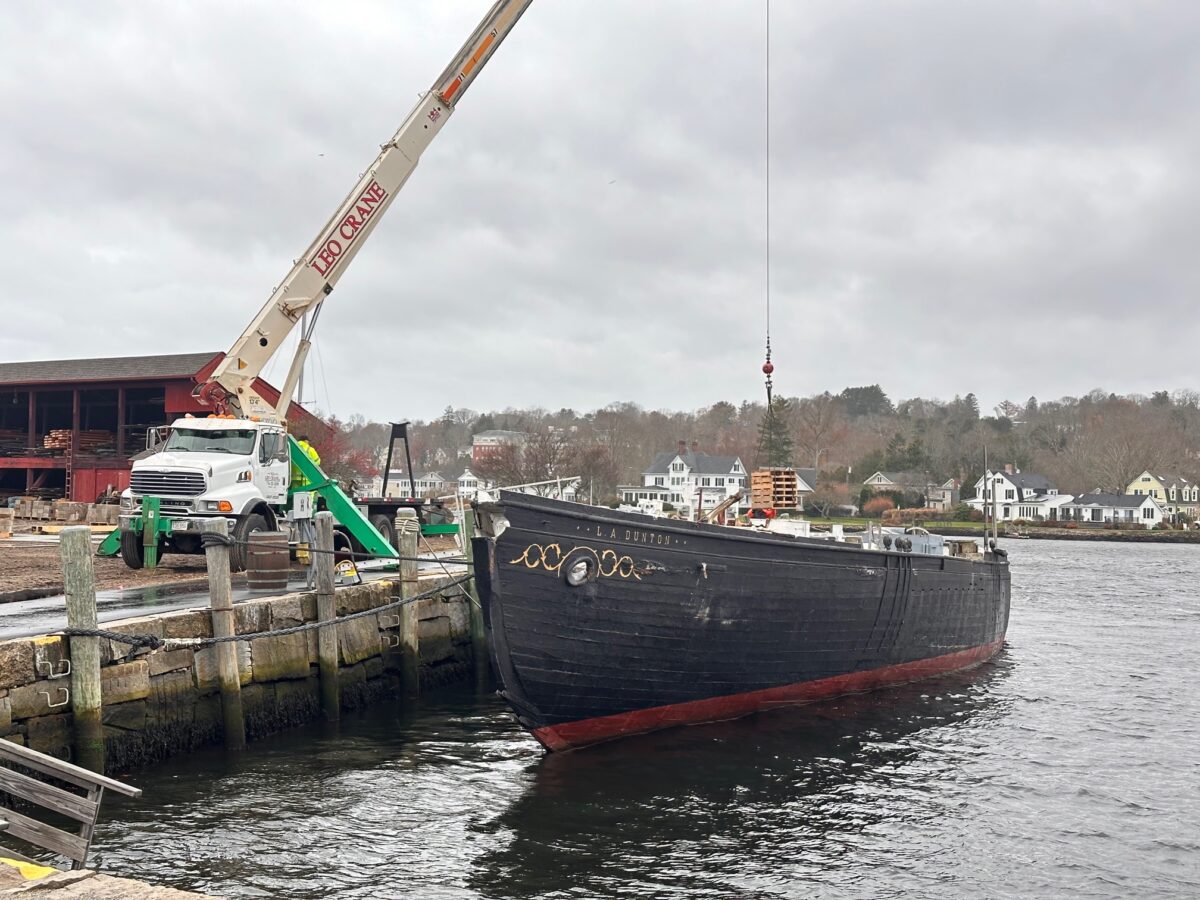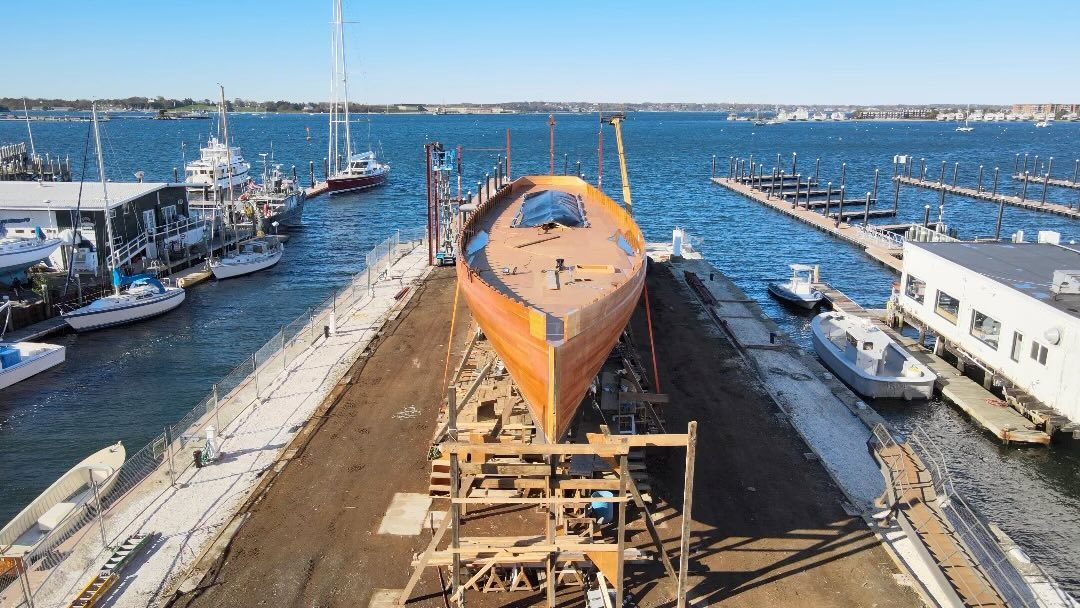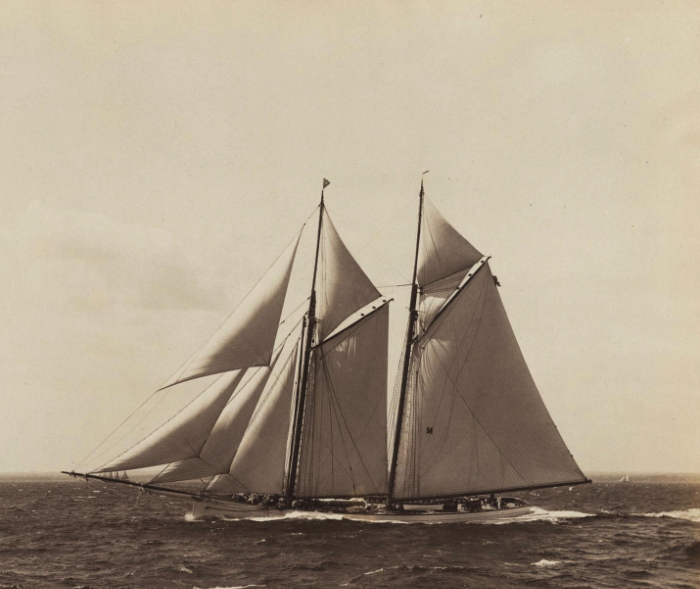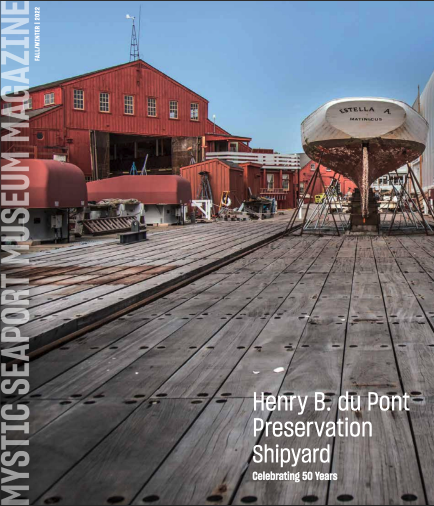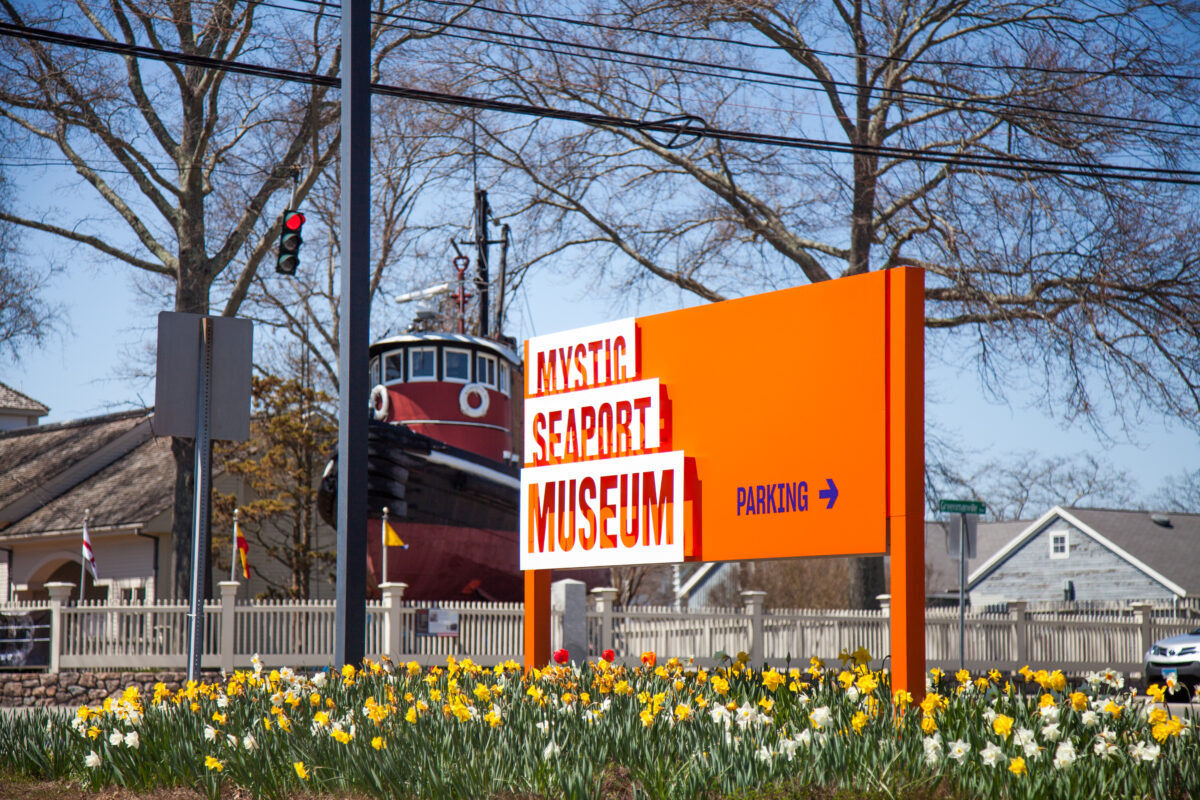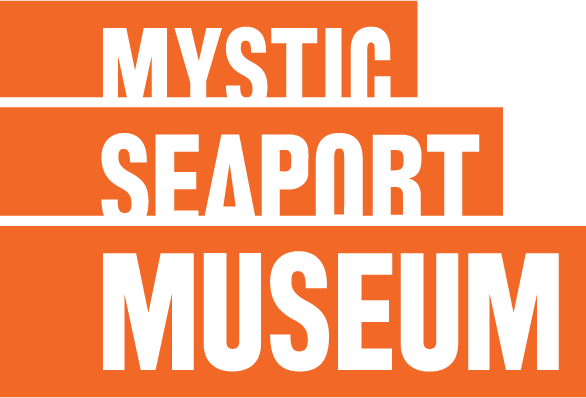Mystic, Conn. (November 8, 2022) – The Henry B. du Pont Preservation Shipyard at Mystic Seaport Museum is preparing to receive a massive restoration project later this month. Coronet, the 1885 Schooner, and what may be considered the last of the Gilded Age yachts will be making its way to Mystic for a three year restoration. The hauling process is proving to be an impressive undertaking in and of itself, as the vessel is currently on dry dock and indoors at IYRS School of Technology and Trades in Newport, Rhode Island, where it has been under restoration since 1995.

First launched in 1885, Coronet was one of the most elegant sailing yachts of its day. Intended for crossing the ocean in style, the 131-foot schooner was designed by William Townsend and built for Rufus T. Bush by the C. & R. Poillon shipyard in Brooklyn. Bush then put forth a $10,000 challenge (roughly $300,000 in today’s dollars) against any other yacht for a transatlantic race. The ocean race between the Coronet and the yacht Dauntless in March 1887 made Rufus T. Bush and the victorious Coronet famous—the New York Times devoted its entire first page on March 28, 1887 to the story.
Henry B. du Pont Preservation Shipyard, which celebrates its 50th anniversary this year, is uniquely suited to the task. In 2007, a major investment was made to upgrade the Shipyard’s shiplift which allows it to haul vessels up to 450 tons, a capability unmatched by any other facility on eastern seaboard.
Since 1995, Coronet has been under restoration at IYRS, the premier marine trades and modern manufacturing school in the United States. Originally purchased as a student project to provide the hands-on experience in historic wooden vessel restoration the school is known for, the schooner was later sold to a private buyer but remained at IYRS under restoration by a team of shipwrights who included IYRS students and alumni. Coronet has been one of Newport’s favorite maritime attractions during its years at IYRS.

Over the course of the next few weeks, Coronet will be moved from dry dock at IYRS and hauled to the Museum in a complex and meticulously planned series of events. Currently underway is the dismantling of the building where Coronet resides, allowing a 1000 ton floating crane to access the vessel. Coronet will then be lifted from the former building site to a dock near IYRS. From there it will make the journey from Newport to Mystic on an eight-hour trip that will end through the Mystic Bascule Bridge and up the Mystic River to the shiplift at the south end of the Museum. Coronet will reside there until restoration is complete, a process that is expected to take approximately three years.
Coronet was recently purchased by Crew, a New York based company run by brothers Alex and Miles Pincus. The purchase and continued restoration efforts of Coronet are in line with Crew’s long history of historic vessel restoration. “Coronet is without equal. Her restoration is a calling that we feel destined to pursue. ”
The Museum and the team at the Shipyard have worked with Crew over the years to maintain vessels in their existing fleet, most recently, Pilot, a wooden schooner with a nearly 100-year history that now serves as a seasonal oyster bar located at Brooklyn Bridge Park’s Pier 6. “Working with Crew has always been a pleasure, and they understand the historic preservation of their fleet. We look forward to this exciting project to bring Coronet to life,” says Chris Gasiorek, Senior Vice President of Operations and Watercraft at Mystic Seaport Museum.
Visitors to the Museum will be able to view the progress of the restoration as the Shipyard offers a unique opportunity to watch its shipwrights while they work. The restoration team will again include IYRS alumni who are looking forward to bringing Coronet’s restoration full circle. Spectators both near and far can also follow along with the restoration on social media at both the Museum and Coronet Instagram accounts.
*Several factors, including weather, will affect the departure date of Coronet from IYRS and arrival at the Museum. At this time, the anticipated arrival to the Museum is December 1. An exact date will be confirmed in a separate communication closer to that time.
###
Media Contact
Sophia Matsas
Director of Marketing & Communications
Mystic Seaport Museum
860.572.5317 (o)
sophia.matsas@mysticseaport.org
About Mystic Seaport Museum
Mystic Seaport Museum is the nation’s leading maritime Museum. Founded in 1929 to gather and preserve the rapidly disappearing artifacts of America’s seafaring past, the Museum has grown to become a national center for research and education with the mission to “inspire an enduring connection to the American maritime experience.” The Museum’s grounds cover 19 acres on the Mystic River in Mystic, CT, and include a recreated New England coastal village, a working shipyard, formal exhibit halls, and state-of-the-art artifact storage facilities. The Museum is home to more than 500 historic watercraft, including four National Historic Landmark vessels, most notably the 1841 whaleship Charles W. Morgan. For more information, please visit mysticseaport.org and follow the Museum on Facebook, Twitter, YouTube, and Instagram.
About Crew
Founded by brothers and lifelong sailors, Alex and Miles Pincus, Crew is an innovative hospitality group that creates and operates experience focused restaurants and maritime ventures.
Crew was built on a simple premise: to create experiences that we love and to share them with the world. Whether it’s sipping craft cocktails on a historic schooner overlooking New York Harbor or enjoying sustainable oysters in a cozy New Orleans hideaway, we focus on making the places we wish existed.
With a growing family of venues, including globally-acclaimed restaurants, a prized fleet of historic vessels, metropolitan marinas, and a renowned ship restoration team, Crew has established itself as a leader in the revitalization of New York’s waterfront and as the prototype for a new genre of urban experiences.
###
